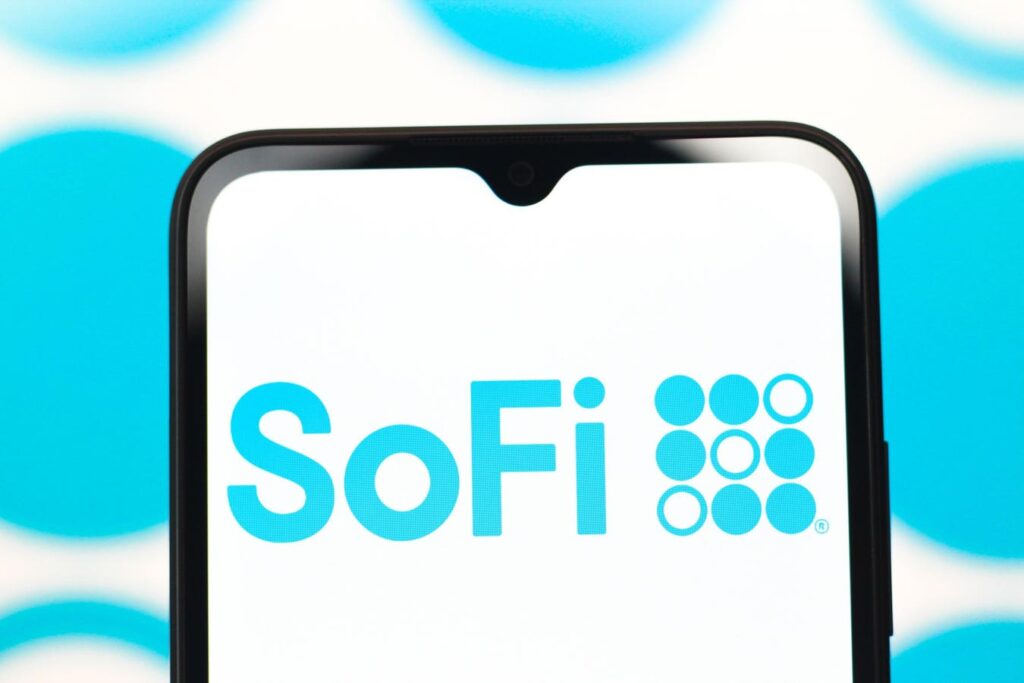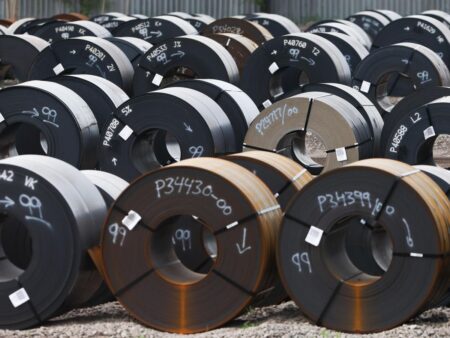SoFi stock (NASDAQ: SOFI) has seen a significant increase of over 15% in the past month. This surge appears to be partly fueled by the successful IPO of Chime, which seems to have had a positive ripple effect across the broader fintech sector. After a multi-year freeze in public offerings, fintech companies like Chime are finally entering the market, albeit with more modest valuations and tempered expectations. See – Strong Growth, Improving Earnings Make Chime Stock A Buy?
However, despite this recent rise, SoFi’s stock, currently trading around $15, no longer appears attractive. We have a couple of key concerns that make its current valuation seem excessively high.
Our conclusion is based on a comprehensive analysis comparing SoFi’s current valuation with its recent operating performance and its historical and current financial health. We’ve evaluated SoFi Technologies across critical parameters including Growth, Profitability, Financial Stability, and Downturn Resilience. Our findings indicate that the company has only a moderate operating performance and financial condition.
That said, if you seek upside with lower volatility than individual stocks, the Trefis High Quality portfolio presents an alternative – having outperformed the S&P 500 and generated returns exceeding 91% since its inception. On a separate note, see Archer Aviation: What’s Happening With ACHR Stock?
How Does SoFi Technologies’ Valuation Look vs. The S&P 500?
Going by what you pay per dollar of sales or profit, SOFI stock looks expensive compared to the broader market.
- SoFi Technologies has a price-to-sales (P/S) ratio of 5.9 vs. a figure of 3.1 for the S&P 500
- And, it has a price-to-earnings (P/E) ratio of 32.9 vs. the benchmark’s 26.9
How Have SoFi Technologies’ Revenues Grown Over Recent Years?
SoFi Technologies’ Revenues have grown considerably over recent years.
- SoFi Technologies has seen its top line grow at an average rate of 36.2% over the last 3 years (vs. an increase of 5.5% for S&P 500)
- Its revenues have grown 25.9% from $2.2 Bil to $2.8 Bil in the last 12 months (vs. growth of 5.5% for S&P 500)
- Also, its quarterly revenues grew 31.7% to $772 Mil in the most recent quarter from $586 Mil a year ago (vs. 4.8% improvement for S&P 500)
How Profitable Is SoFi Technologies?
SoFi Technologies’ profit margins are much worse than most companies in the Trefis coverage universe.
- SOFI Operating Cash Flow (OCF) over this period was $-1.8 Bil, pointing to a very poor OCF Margin of -65.6% (vs. 14.9% for S&P 500)
- For the last four-quarter period, SOFI Net Income was $482 Mil – indicating a moderate Net Income Margin of 17.2% (vs. 11.6% for S&P 500)
Does SoFi Technologies Look Financially Stable?
SoFi Technologies’ balance sheet looks strong.
- SoFi Technologies’ Debt figure was $3.1 Bil at the end of the most recent quarter, while its market capitalization is $17 Bil (as of 6/19/2025). This implies a moderate Debt-to-Equity Ratio of 19.8% (vs. 19.4% for S&P 500). [Note: A low Debt-to-Equity Ratio is desirable]
- Cash (including cash equivalents) makes up $4.2 Bil of the $38 Bil in Total Assets for SoFi Technologies. This yields a strong Cash-to-Assets Ratio of 11.2%
How Resilient Is SOFI Stock During A Downturn?
SOFI stock has fared much worse than the benchmark S&P 500 index during some of the recent downturns. While investors have their fingers crossed for a soft landing by the U.S. economy, how bad can things get if there is another recession? Our dashboard How Low Can Stocks Go During A Market Crash captures how key stocks fared during and after the last six market crashes.
Inflation Shock (2022)
- SOFI stock fell 83.3% from a high of $25.78 on 1 February 2021 to $4.30 on 7 December 2022, vs. a peak-to-trough decline of 25.4% for the S&P 500
- The stock is yet to recover to its pre-Crisis high
- The highest the stock has reached since then is 18.03 on 23 January 2025, and it currently trades at around $15.40
Covid Pandemic (2020)
- SOFI stock fell 46.7% from a high of $25.78 on 1 February 2021 to $13.75 on 17 August 2021, vs. a peak-to-trough decline of 33.9% for the S&P 500
- The stock is yet to recover to its pre-Crisis high
Putting All The Pieces Together: What It Means For SOFI Stock
In summary, SoFi Technologies’ performance across the parameters detailed above is as follows:
- Growth: Extremely Strong
- Profitability: Very Weak
- Financial Stability: Strong
- Downturn Resilience: Extremely Weak
- Overall: Neutral
SoFi’s performance across the analyzed parameters has been neutral. Considering its high valuation compared to the benchmark index, we believe the stock is currently unattractive. In fact, SoFi’s own average price-to-sales (P/S) ratio over the last three years was 4.5 times, significantly lower than the current 5.9 times.
While we acknowledge that the success of Chime’s IPO and SoFi’s expanding customer base might lead some investors to assign higher valuation multiples, it’s crucial to consider the inherent risks. These include elevated interest rates and geopolitical tensions, both of which could impact the broader markets. Furthermore, SoFi has shown relatively less resilience to such adverse economic conditions.
For investors seeking to mitigate these risks, our Trefis High Quality (HQ) Portfolio offers a compelling alternative. It applies a robust risk assessment framework to its collection of 30 stocks, which has a track record of comfortably outperforming the S&P 500 over the last 4-year period. Why is that? As a group, HQ Portfolio stocks provided better returns with less risk versus the benchmark index; less of a roller-coaster ride, as evident in HQ Portfolio performance metrics.
Read the full article here
















